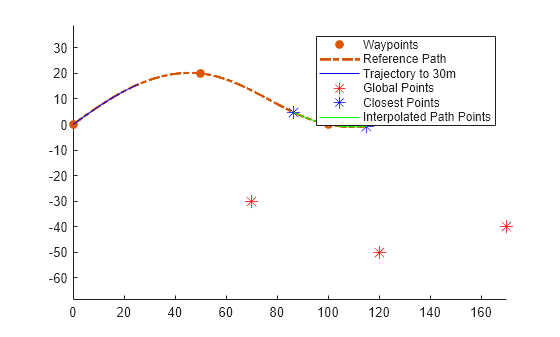global2frenet
Convertir estados globales a estados de Frenet
Sintaxis
Descripción
frenetState = global2frenet(refPath,globalState)
[___, devuelve latTimeDerivatives] = global2frenet(refPath,globalState)latTimeDerivatives que contiene derivadas de primer y segundo orden de la desviación lateral con respecto al tiempo y un indicador que indica si el rumbo debe invertirse al convertir a coordenadas globales.
[___] = global2frenet( acepta un vector de longitudes de arco, refPath,globalState,sFrame)sFrame en el que se debe centrar el marco de Frenet.
Ejemplos
Argumentos de entrada
Argumentos de salida
Más acerca de
Capacidades ampliadas
Historial de versiones
Introducido en R2020b


